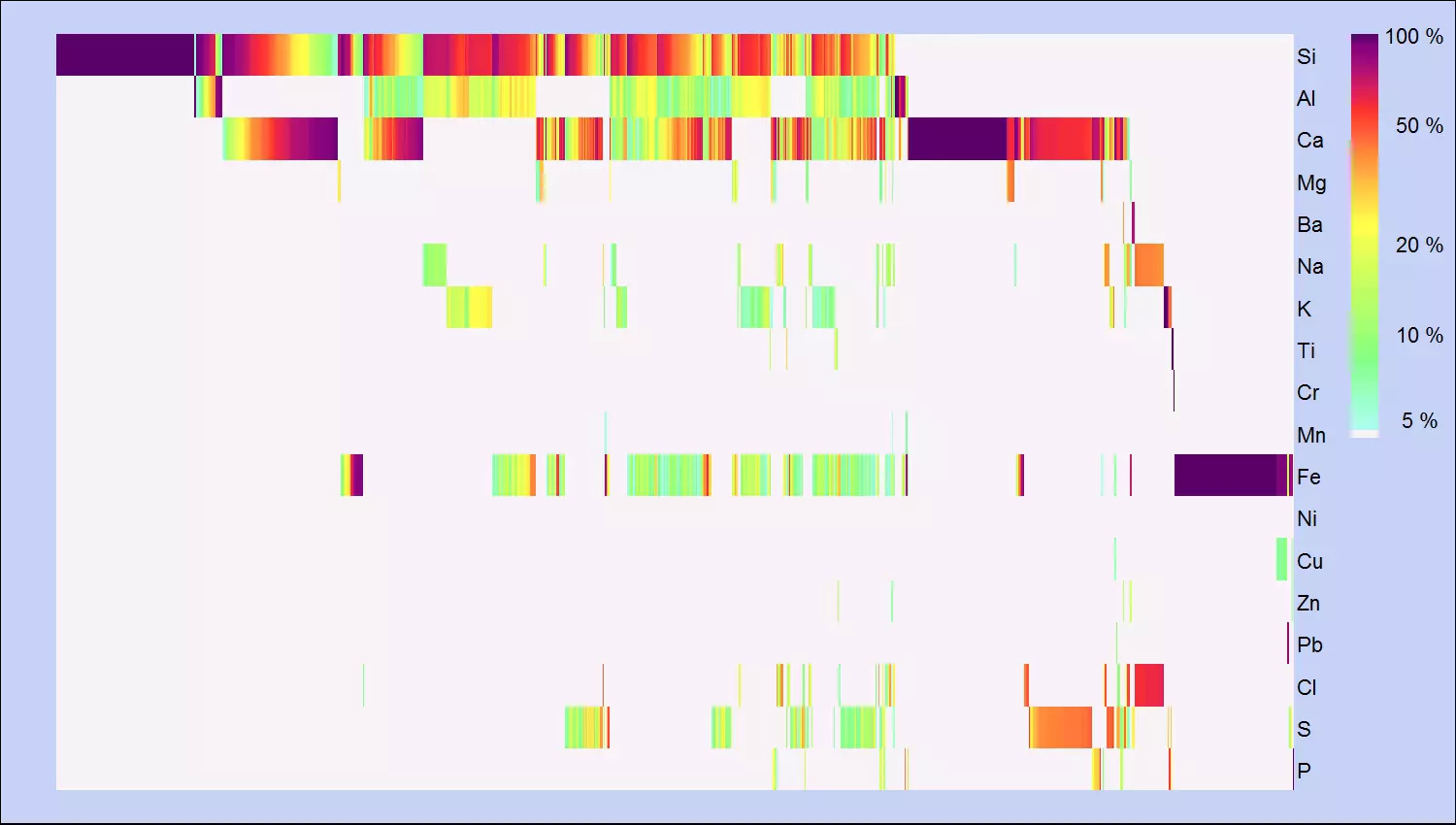A model based three-stage classifier for airborne particles
A challenge for measuring technique and statistics

At a glance
- Project leader : Dr. René Locher
- Project team : Dr. Thoralf Mildenberger, Prof. Dr. Andreas Ruckstuhl
- Project status : completed
- Funding partner : CTI
- Project partner : Particle Vision GmbH
- Contact person : René Locher
Description
Computer controlled scanning electron microscopy (CCSEM) is a widely-used method for single airborne particle analysis. It produces large amounts of chemical and morphological data, whose processing and interpretation can be very time consuming.
We have developed for Particle Vision GmbH an automated three-stage particle classifier based on elemental compositions of the individual particles. A rule-based classifier is applied in the first stage to form the main classes consisting of particles of the same elements. Only elements with concentrations above a threshold of 2 wt% are considered. As carbon and oxygen can be determined only semiquantitatively, these two elements are excluded and the proportions of the remaining elements > 2% are rescaled to sum up to 100%. In the second stage, data of each main class are isometrically log-ratio transformed and then clustered into subclasses, using a robust, model-based method. Single particles which are too far away from any more densely populated region are excluded during training, preventing these particles from distorting the definition of the sufficiently populated subclasses. Regardless of the size of training data, some particles might belong to still undefined classes. Therefore, a classifier was chosen which can declare particles as unknown when they are too far away from all classes defined during training. In rule-based stage 3 finally, the particles are divided into particles of no and low, medium or high content of carbon.
Particle Vision used chemical, geological and air quality know-how to attribute thousands of individual classes to a specific compound, which is characteristic of one or several emission sources. When more than one source can be attributed to a specific compound, the context of the measurements decides which is the most probable source of the compound.
Publications
-
Meier, Mario Federico; Mildenberger, Thoralf; Locher, René; Rausch, Juanita; Zünd, Thomas; Neururer, Christoph; Ruckstuhl, Andreas; Grobéty, Bernard,
2018.
Journal of Aerosol Science.
123, pp. 1-16.
Available from: https://doi.org/10.1016/j.jaerosci.2018.05.012